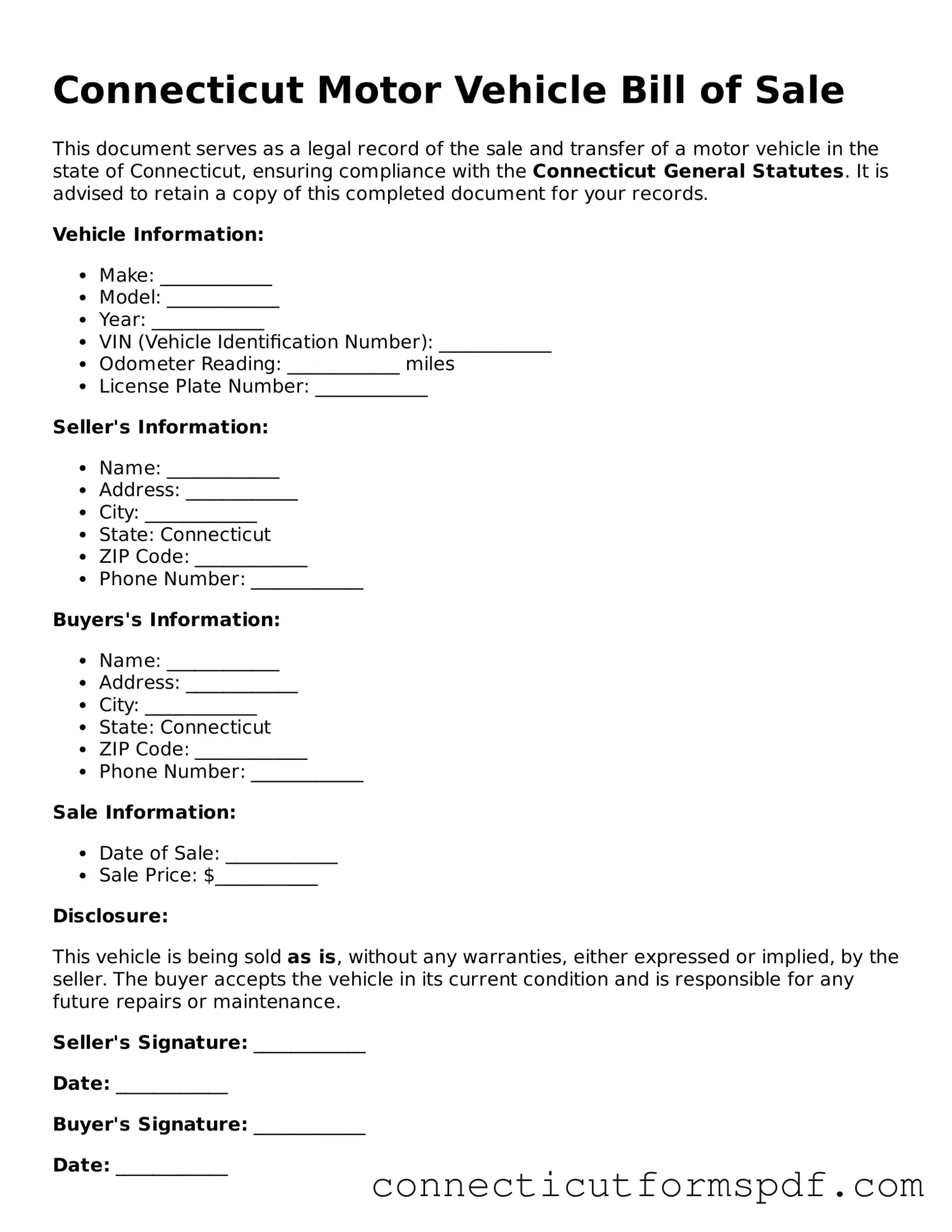Connecticut Motor Vehicle Bill of Sale
This document serves as a legal record of the sale and transfer of a motor vehicle in the state of Connecticut, ensuring compliance with the Connecticut General Statutes. It is advised to retain a copy of this completed document for your records.
Vehicle Information:
- Make: ____________
- Model: ____________
- Year: ____________
- VIN (Vehicle Identification Number): ____________
- Odometer Reading: ____________ miles
- License Plate Number: ____________
Seller's Information:
- Name: ____________
- Address: ____________
- City: ____________
- State: Connecticut
- ZIP Code: ____________
- Phone Number: ____________
Buyers's Information:
- Name: ____________
- Address: ____________
- City: ____________
- State: Connecticut
- ZIP Code: ____________
- Phone Number: ____________
Sale Information:
- Date of Sale: ____________
- Sale Price: $___________
Disclosure:
This vehicle is being sold as is, without any warranties, either expressed or implied, by the seller. The buyer accepts the vehicle in its current condition and is responsible for any future repairs or maintenance.
Seller's Signature: ____________
Date: ____________
Buyer's Signature: ____________
Date: ____________
By signing this document, both parties agree to the terms of sale outlined herein. This Bill of Sale is subject to the laws of the state of Connecticut and is considered binding upon both the buyer and the seller.
Note: It is highly recommended that both parties complete and retain a copy of this document for their records, along with obtaining a release of liability and transfer documents from the Connecticut Department of Motor Vehicles.
